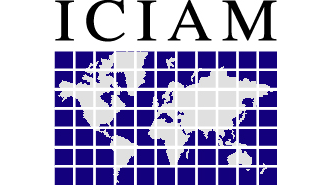Abstract
India is well known in the world for its contribution to the ancient Mathematics and even people agree in different parts of the world that India has done very well in the areas of pure mathematics during contemporary time through the work of researchers at Tata Institute of Fundamental Research at Bombay and large number of universities in the different parts of the country. It is true that in contemporary time most of the educational centers of higher education in India mainly focus on pure form of Mathematics, Definition, Existence and uniqueness theorems, Lemma and corollaries. Mainly problems are direct/well posed (solution exists which is unique and stable). However, illustration of mathematical problems with physical phenomena or processes and interpretation of solution and its visualization or formulation of Physical phenomena in appropriate mathematical concepts are not emphasized in the teaching of Pure or Applied Mathematics.
For a long time people in this part of the world thought Mechanics and Relativity Theory are the only parts of Applied Mathematics. Fourier analysis, in particular, and Harmonic Analysis in general, Applied Functional Analysis, Numerical Analysis were not considered as part of Applied Mathematics till the eighties. Till early sixties only classical mathematics like special function, sequence and series, mechanics, geometry were taught in most of the educational institutions. Modern Algebra, Topology, Measure Theory, Functional Analysis, Approximation Theory Harmonic Analysis, Probability Theory, Mathematical Statistics, Graph Theory, Differentiable Manifold, Complex Analysis and their applications to Real World Problems have become popular in India due to various steps taken by Indian Government on the initiative of a group of talented Indians since the beginning of sixties. In this article emergence of Applied and Industrial Mathematics in India will be discussed. It is also interesting to note that
many significant applications of mathematics to solve real world problems have been carried out by engineers and scientists. It is also heartening to observe that some Indians received very prestigious awards for applying mathematics in their work such as Nobel laureate Subrahmanyan Chandrasekhar (He was Ph.D. supervisor of late Prof. S.K. Trehan, a distinguished Indian Applied Mathematician and I had privilege to host him at my residence in early nineties), Prof. Srinivasan S.R. Varadhan, Abel Prize winner and recipient of US National Medal of Science
(widely considered the panache of scientific achievement), Prof. C.R. Rao (FRS) recipient of US National Medal of Science and Prof. Thomas Kailath, recipient of US National Medal of Science, Prof. K.R. Sreenivasan, a member of the National Academy of Sciences, and National Academy of Engineering and a fellow of the American Academy of Science and Arts and former Director ICTP.
The article is divided into three parts. First part is devoted to the development of Applied Mathematics prior to 1960, the second part deals with development of the Industrial and Applied Mathematics between 1960-1990 (1990 is the year of establishment of the Indian Society of Industrial and Applied Mathematics). The third part contains status of Industrial and Applied Mathematics in different parts of India during 1990-2015, giving the details of how emerging
areas have spread. We conclude the article by presenting an assessment of what has been achieved till now and what is to be achieved in future.
I. Development during 500-1960
The period: 500-1200 A.D. is the golden period of Indian Mathematics during which besides invention of zero and operation with it, the knowledge of mathematics was provided solid foundation [1,4,5,6]. Area or perimeter of the standard geometrical figures including surface area and volume of sphere were introduced by Indians during this period along with fundamental concepts related to Trigonometry and Algebraic equations. Some of those results were rediscovered by Euler and Lagrange in the 18th century [1, p.477]. The period: 1201-1800 is treated as the period of commentaries of the earlier work and known for two major achievements, one for study of infinite series by Kerala School of Mathematics and other for the establishment of five big stone observatories in Delhi, Jaipur, Banaras, Mathura and Ujjain by Sawai Jai Singh (1688-1743). He got this work done under the guidance of Portuguese and Missionary in order to promote interest in observational astronomy. The Kerala School of
mathematics developed expansion of sin ø and cos ø about two hundred years before Gregory
and others.
Sir Autosh Mokherjee, is the first Indian Mathematicians (1864-1934) whose work includes pure as well as applied mathematics. His field of research includes theory of elliptic functions, Differential equations relating to different kinds of conics, and problems of hydrokinematic equations relating to rotational and irrotational motions of fluids. He was elected fellow of AMS (American Mathematical Society) in 1900. He was the Vice-Chancellor of Calcutta University during 1906-14 and 1921-23. He got created first Chair of Applied Mathematics named, Ghose Chair of Applied Mathematics. It was offered to Professor Ganesh Prasad in 1914, who has proved himself as expert of both pure and Applied Mathematics.
However, he joined Banaras Hindu University in 1918, Varanasi, where he motivated a young boy named Badri Nath Prasad to study Mathematics, now known as Prof. B. N. Prasad. Subsequently, he became a distinguished scholar who led directions in mathematics research for more than a decade. He died in Jan. 1966 at the age of 67 in Allahabad. He was elected President of the Indian Science Congress Association and presided its 1966 session (2nd January to 10th January, 1966). He was also nominated member of the Rajay Sabha (Member Upper House of
the Indian Parliament, a unique honor for a mathematician by profession). He was expert of Fourier Analysis and several of his Ph.D. students like Prof. M.L. Misra, Prof. P.L. Bhatnagar, Prof. U.N. Singh, Prof. Jamil A. Siddiqi, Prof. T. Pati, Prof. Parmila Srivastav, Dr. S.R. Sinha, Dr. S.N. Bhatt, Prof. S.M. Mazhar etc. are renowned experts of their specialties. Prof. B.N. Prasad was closely associated with three reputed universities of India: Banaras Hindu University (BHU), Allahabad University (AU) and Aligarh Muslim University (AMU). His three Ph.D. Students, Prof. U.N. Singh (father of the present Vice-Chancellor, Delhi University, Prof. Dinesh Singh), Prof. Jamil A. Siddiqi (Supervisor of the founder Secretary of ISIAM Prof. A.H. Siddiqi) and Prof. S.M. Mazhar (it is mere coincidence that his Ph.D. student Prof. Niranjan Singh was my Ph.D. examiner) were associated with AMU and played significant roles in spreading Modern Mathematics and its applications in India, particularly northern part of India. To know
further details about the contribution of Prof. B.N. Prasad, see [W2].
Contribution of Prof. B.N. Prasad, his research scholars, and research scholars of his research collaborators will be a major part of the Indian contributions in the Pure and Applied Mathematics during the last seventy years. In fact, he had taken the initiative in early sixties to establish a Research Institute of Mathematics in Allahabad on the pattern of TIFR, Bombay named Mehta Research Institute. Two illustrious Indian Applied Mathematicians, Prof. S.S. Shri
Khande and Prof. P.L. Bhatnagar were its Directors. Later on this was shifted to a suburb, of Allahabad and named Harish Chandra Research Institute of Mathematical Sciences, managed by the Atomic Energy Commission, Government of India.

